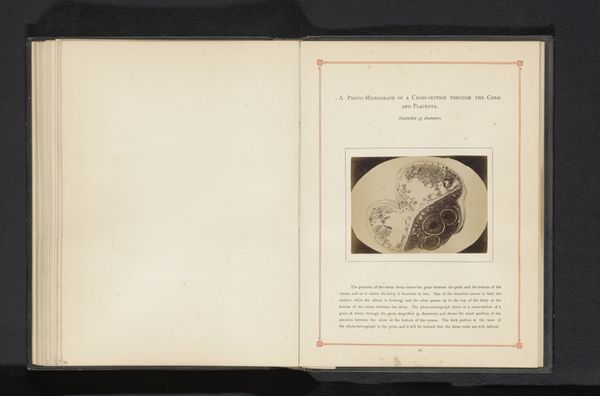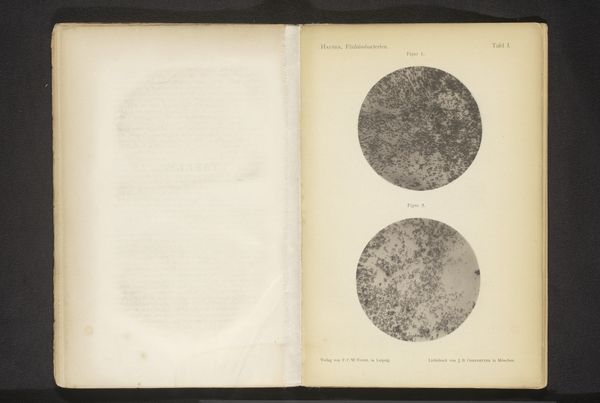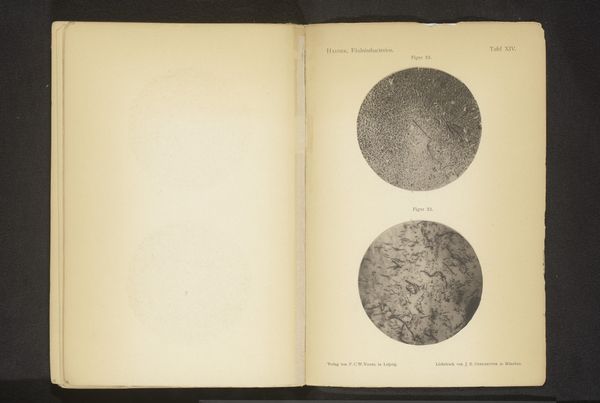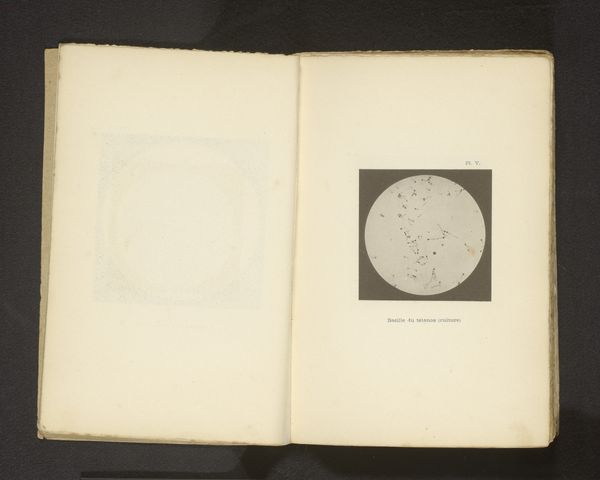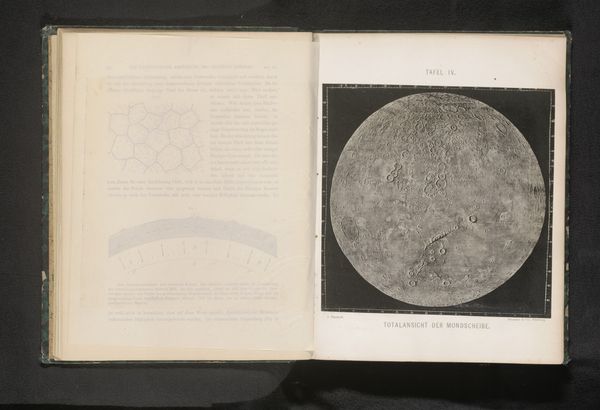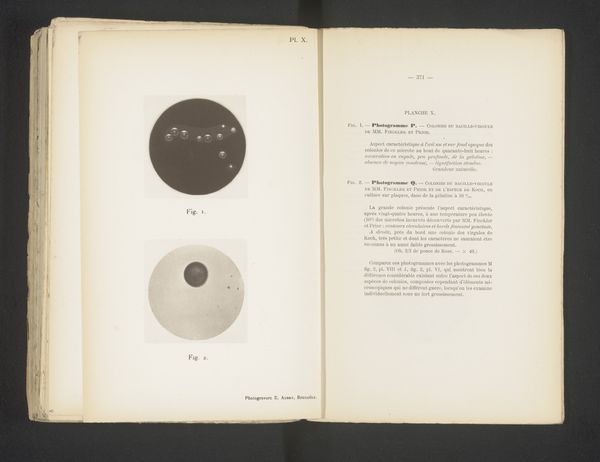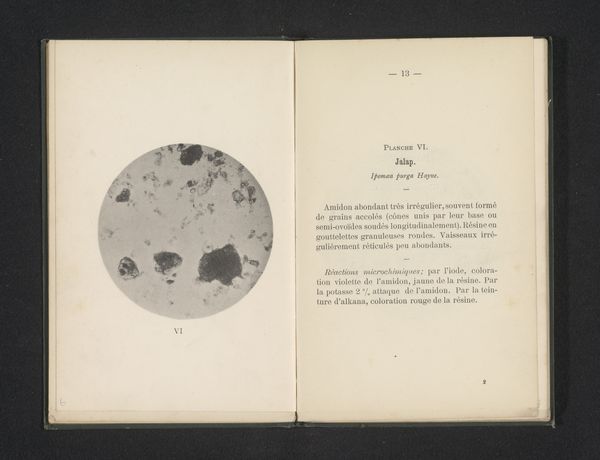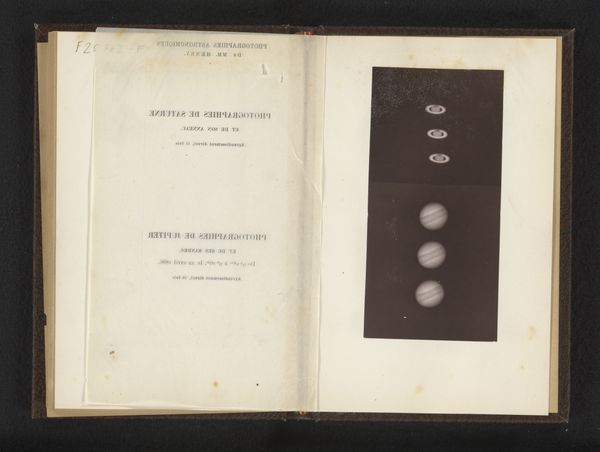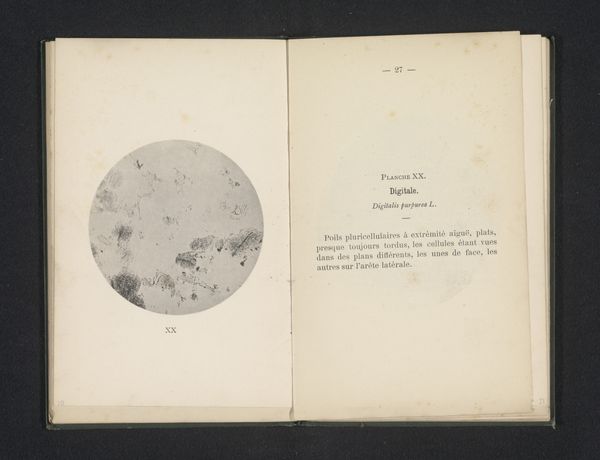
print, photography, albumen-print
#
portrait
#
aged paper
#
still-life-photography
#
homemade paper
#
paper non-digital material
#
paperlike
# print
#
sketch book
#
personal journal design
#
photography
#
personal sketchbook
#
fading type
#
academic-art
#
sketchbook art
#
design on paper
#
albumen-print
Dimensions: height 92 mm, width 91 mm
Copyright: Rijks Museum: Open Domain
Curator: What a striking image! The work before us is "Zon," an albumen print possibly created between 1870 and 1879 by Lewis M. Rutherford. Editor: The word that comes to mind is "ephemeral". The aging of the paper itself is just as compelling as the image, isn't it? The materiality here speaks of decay and time, and adds a strange depth to what otherwise could be regarded as a scientific photo. Curator: Indeed, this wasn’t simply scientific record-keeping. Consider that Rutherford was among the pioneers who bridged the gap between scientific instrumentation and artistic practice, pushing for advancements in photographic processes like improvements to the achromatic telescope lenses he utilized. The physicality of each print would have mattered immensely as a product of complex darkroom procedures. Editor: I find myself focusing on that tension. The image, I believe, was reproduced at a pivotal moment when photography struggled to establish itself alongside painting within art institutions. Viewing these images as more than documentation reframes debates around photographic agency; the production value challenges existing cultural hierarchies related to image-making. Curator: Absolutely. Museums and institutions, during that period, actively participated in forming the very language of photography and in doing so shaped its value systems. In many respects this influenced how the public were conditioned to perceive not only photographic still life like the "Zon" image, but also the natural world that lay outside one’s own lived experience. Editor: Looking at it that way makes this about more than just one image from history. There’s so much bound up in the craft itself that gives us reason to consider art production's connection with evolving social needs and intellectual climates during that time. Curator: The relationship of image to paper—the material constraints and their capacity to signify deeper themes—reveals rich layers of the artist’s methods. Thinking critically allows deeper reflection connecting these details, offering invaluable insight not typically found at face value upon observing a print such as this. Editor: And those sunspots! A subtle detail captured in a delicate way to trigger larger insights through what happens in the materials used during its conception... What an object!
Comments
No comments
Be the first to comment and join the conversation on the ultimate creative platform.

